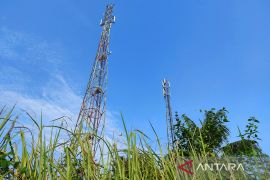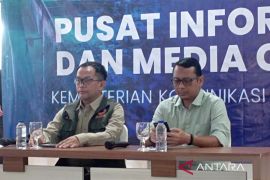"The government should take the bold step of reallocating the frequencies, especially in the 900 MHz and 1,800 MHz bands, so it can provide optimised service to the community," said Heru Sutadi, a researcher from the Indonesia ICT Institute, here on Wednesday.
The current allocation of frequencies among telecom operators is extremely ineffective from the viewpoint of its use for and contribution to the industry, he added.
At present, the largest share of bandwidth for the 900MHz spectrum is owned by Telkomsel, with 7.5 MHz, Indosat (10 MHz) and XL (7.5 MHz).
Meanwhile, with regard to the 1,800 MHz spectrum, Telkomsel leads with 22.5 MHz, followed by Indosat (20 MHz), XL (7.5 MHz), Axis (15 MHz), and Hutchinson (10 MHz),
However, the 2.1 GHz spectrum is shared equally by all mobile operators, each with 10 MHz.
As of the first half of 2012, Telkomsel is the leader, with a total of 40 MHz of spectrum and about 117 million subscribers, Heru noted.
With the same amount of spectrum, Indosat has 50.9 million customers, while XL, with 25 MHz of spectrum, has 45.9 million subscribers.
In terms of the average outgoing minutes of usage (MOU) per customer during the first half of 2012, XL led with 1257 minutes per subscriber, followed by Telkomsel with 751 minutes per subscriber, and Indosat with only 94 minutes per subscriber, Heru stated.
As for the average outgoing MOU per paired MHz in the same period, Telkomsel took the first place with 2.2 billion calls/MHz, Indosat 120 million calls per MHz, and XL 2308 billion calls per MHz, he added.
"Based on data from the three operators` financial statements, it is clear that the frequencies must be reallocated in anticipation of increased traffic in the future," Heru pointed out.
He said the policies aimed at reallocating frequencies among telecom providers were reasonable given the three major operators accounted for 90 percent of the industry`s revenue.
"The three major operators control 105 MHz of spectrum, while the other seven players control only 75 MHz. It is time to objectively review all of it," Heru added.
Meanwhile, Kamilov Sagala, the director of the Institute for Information Society Development and Empowerment (LPPMI), suggested that the government develop a clear road map for frequency allocation in light of the immense potential of broadband technology. (*)
Editor: Aditia Maruli Radja
Copyright © ANTARA 2012











